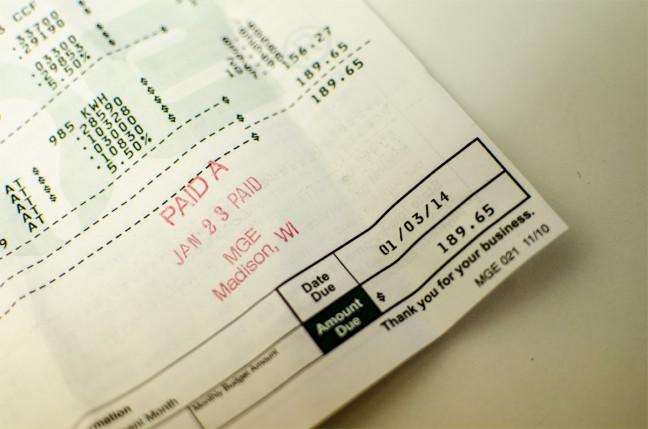As the polar vortex continues its reign over the Midwest, Madison residents are facing dramatic spikes in energy costs.
Because of the dangerously frigid temperatures, people are using more gas and electricity to keep their houses and apartments warm. With such high demand and limited supply, prices have risen significantly, according to Madison Gas and Electric’s Energywise newsletter.
“Our average consumer in December of 2013 paid 40 percent more than they did in December 2012,” Steve Kraus, manager of media relations at MG&E, said.
Kraus said customers can expect to see even higher costs by the end of January due to this month’s more frequent subzero temperatures.
According to the MG&E newsletter, customers could also see higher costs in January stemming from longer nights requiring more light usage, people being home and using appliances more often while on break, and things like holiday decorations and space heaters.
The extra costs have become a burden to many, specifically students. University of Wisconsin sophomore Kate Hayes said her bills have gone from $36 a month to upwards of $200 a month.
“I’m definitely not pleased about paying so much, especially since it took us by surprise. What’s even more frustrating is our apartment is miserably cold anyways and you can see your breath in one of our rooms,” Hayes said.
As a student, managing the extra costs has been particularly stressful for Hayes, who was able to get a discount on rent from her landlord in order to compensate.
Hayes said she was completely unaware of the fact that the heat in her building was partially electric. Because her landlord only covers heat from gasoline, she was left with hefty costs.
“I was told when MG&E came and looked at my apartment that electric heat is much less cost efficient than gas heat and for those who use primarily electric heat, they can see up to $500 a month in electric,” Hayes said.
According to the MG&E website, electricity costs about twice as much as natural gas for the same amount of heat.
According to the website, one way of telling whether the apartment is heated with gas or electric is by looking at the thermostat. Apartments with more than one thermostat are usually heated with electric heat, the website said.
“I would definitely say look over your lease to see what your landlord covers. I would also recommend checking what the radiators are fueled with right when you move in so you know what to turn on when it gets cold,” Hayes said.
For those concerned with the number on their bills, there are ways of curbing the costs. According to Kraus, the number one way of controlling heating bill costs is turning down the thermostat to a lower temperature while away from home and at night. Small things like closing leaks on doors and windows can also have a big impact, he said.
MG&E’s site lists a number of solutions such as letting the sun in during the day, and closing drapes or shades at night. It also said using fluorescent lighting could save two-thirds of lighting costs.












